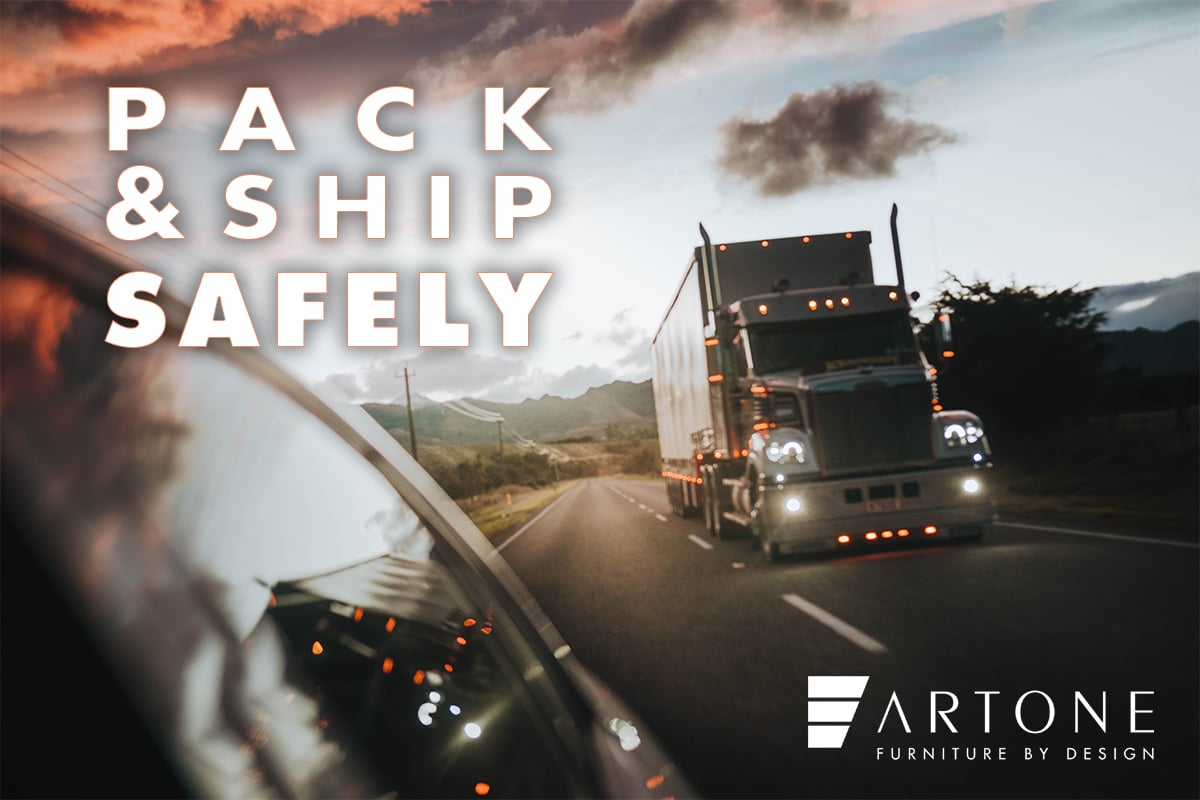
Just when you think your job is done ...
You’ve created a beautiful design, reviewed budgets, and selected (or assisted in the selection) of all the right products to bring your hotel design vision to life.
It might seem like there’s only one thing left to do: arrange the delivery of your furniture, fixtures, and equipment (i.e. FF&E).
Not so fast.
Before locking in a delivery date, there are a few things you should talk to your casegoods supplier about to ensure your products are shipped safely, worry-free, and without any additional costs.
5 Things to Ask About For Hotel Casegoods Delivery
In a perfect world, your hotel casegoods would go from the manufacturing floor to your door with no stops in between. They’d also arrive in the same condition they were when they got off the assembly line.
Hotel casegoods are often a major investment. And there’s nothing more frustrating than receiving a product in poor condition because of issues during shipping. Here are some important points to go over with your manufacturer:
- Storage
- Third-party carriers
- FOB
- Waste
- Warranty
1. Storage
Some hotel projects are so large or happen during normal operations that they need to be tackled floor-by-floor. You might not be able to accept your order all at once. Until you’re ready, your casegoods may end up in storage, waiting to continue their journey to you.
If stored improperly, casegoods are susceptible to damage long before they leave for delivery. Ask your manufacturer how your hotel furniture is kept until you’re ready to receive it. Key storage considerations include:
- Coverings to prevent dents, gouges and scratches
- Climate control
- Humidity control
2. Third-Party Carriers
Most hotel furniture manufacturers in the USA use third-party carriers to transport goods from their facility to a project’s destination. There are very few products that aren’t shipped that way anymore.
As the company moving your order between locations, a third-party carrier plays the biggest role in keeping your casegoods safe while in transit and delivered on-time. They’re also regulated by both the UCC (Uniform Commercial Code) and the ICC (Interstate Commerce Commission), which both set shipping standards.
You may have a preferred carrier, or one you do not want to work with. Discussing who handles your order when it’s on the road before it actually leaves your manufacturer guarantees your shipment is delivered by someone you trust.
3. FOB
FOB stands for “free/freight on board.” The abbreviated term is typically followed by a location or destination city or port, such as “factory” or “Jamestown, N.Y.” The designation is used to indicate where the liability and ownership of goods is transferred from a seller to a buyer. In simpler terms, the FOB determines who’s responsible for your order as it makes its way to its final destination -- you or your manufacturer.
There are two FOB classifications:
- FOB origin means the purchaser pays the shipping costs and owns the goods as soon as they leave their point of origin.
- FOB destination means the seller is responsible for the goods as they reach the buyer.
What does this mean to you?
Understanding when that transfer of responsibility happens can make a big difference to your casegood project’s budget. If your shipment is FOB destination, you may want to insure it or talk to those delivering your products about how they protect your goods in transit.
4. Warranty
This piggybacks off of the last point. It also can save some headache from when your order is shipped to long after it’s installed.
Not every shipment arrives at its destination in the same condition it left the manufacturing facility. Sometimes, things happen in transit; have you ever received damaged product in a beat up box in the mail?
Before finalizing your order, ask about what type of coverage -- namely, a warranty -- is offered to protect your casegoods as they travel from point A to point B.
Should damage occur while in transit, it may be covered by the manufacturer regardless of FOB destination.
What’s more, having a warranty gives you peace of mind that your casegoods are protected for a set amount of time from issues such as:
Defects
- Damaged parts
- Repair
- Replacement
- On-site or factory service
5. Waste Shipping Materials
Casegoods do not travel solo during shipping. They’re usually accompanied by materials to keep them protected from damage while en-route to your hotel.
This means you may have to deal with a large amount of waste, from foam pellets to cardboard to pallets. With large orders -- think dozens of dressers or microfridge cabinets -- there’s likely going to be a mountain of shipping materials after everything is opened up.
Unpacking and disposing of the shipping materials may become a project itself.
Depending on your order’s size and the amount of shipping materials, it may cost additional money to have the waste taken away.
Shipping material details need to be accounted for during the planning process, not after the product is delivered. A few dumpsters full of packing peanuts and protective plastic covers add additional expenses to your project.
Matching Hotel Casegood Deliveries With Hospitality Logistics
Today’s consumers have the ability to source FF&E from all over the world. Understanding the supply and delivery chain helps you avoid any surprises with your order when it arrives at your doorstep.
Ensuring proper handling, movement, and delivery of your FF&E for your hospitality project saves you time, money, and headache later on.
Work to get your hotel casegoods from point A to point B efficiently starts long before they’re shipped.
Download our Custom Hospitality Furniture Production Timeline for Scheduling, Planning, and Tracking eBook to learn what you should expect during the casegood manufacturing process:

